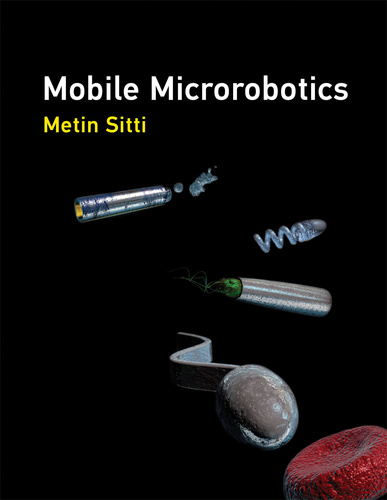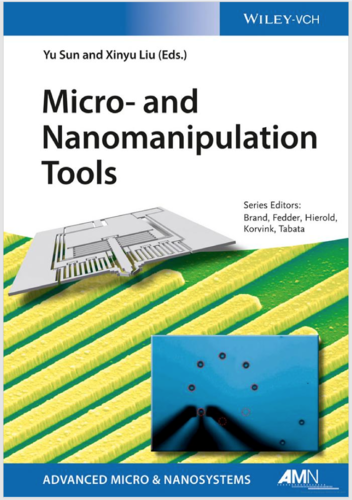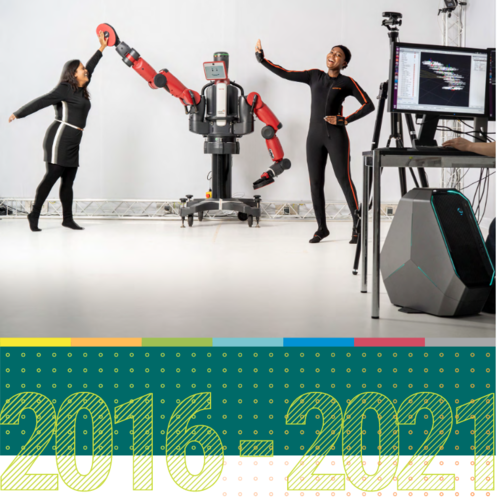2021
Method of making one or more fibrils, computer implemented method of simulating an adhesive force of one or more fibrils and fibril
2019
Scientific Report 2016 - 2018
2017
Mobile Microrobotics
2015
Untethered Magnetic Micromanipulation
Diller, E., Sitti, M.
In Micro-and Nanomanipulation Tools, 13, 10, Wiley-VCH Verlag GmbH & Co. KGaA, November 2015 (inbook)
2014
Addressing of Micro-robot Teams and Non-contact Micro-manipulation
Diller, E., Ye, Z., Giltinan, J., Sitti, M.
In Small-Scale Robotics. From Nano-to-Millimeter-Sized Robotic Systems and Applications, pages: 28-38, Springer Berlin Heidelberg, 2014 (incollection)
2012
Automated Tip-Based 2-D Mechanical Assembly of Micro/Nanoparticles
Onal, C. D., Ozcan, O., Sitti, M.
In Feedback Control of MEMS to Atoms, pages: 69-108, Springer US, 2012 (incollection)
2011
Automated Control of AFM Based Nanomanipulation
Xie, H., Onal, C., Régnier, S., Sitti, M.
In Atomic Force Microscopy Based Nanorobotics, pages: 237-311, Springer Berlin Heidelberg, 2011 (incollection)
Teleoperation Based AFM Manipulation Control
Xie, H., Onal, C., Régnier, S., Sitti, M.
In Atomic Force Microscopy Based Nanorobotics, pages: 145-235, Springer Berlin Heidelberg, 2011 (incollection)
Descriptions and challenges of AFM based nanorobotic systems
Xie, H., Onal, C., Régnier, S., Sitti, M.
In Atomic Force Microscopy Based Nanorobotics, pages: 13-29, Springer Berlin Heidelberg, 2011 (incollection)
Applications of AFM Based Nanorobotic Systems
Xie, H., Onal, C., Régnier, S., Sitti, M.
In Atomic Force Microscopy Based Nanorobotics, pages: 313-342, Springer Berlin Heidelberg, 2011 (incollection)
Nanomechanics of AFM based nanomanipulation
Xie, H., Onal, C., Régnier, S., Sitti, M.
In Atomic Force Microscopy Based Nanorobotics, pages: 87-143, Springer Berlin Heidelberg, 2011 (incollection)
Instrumentation Issues of an AFM Based Nanorobotic System
Xie, H., Onal, C., Régnier, S., Sitti, M.
In Atomic Force Microscopy Based Nanorobotics, pages: 31-86, Springer Berlin Heidelberg, 2011 (incollection)
2010
Nanohandling robot cells
Fatikow, Sergej, Wich, Thomas, Dahmen, Christian, Jasper, Daniel, Stolle, Christian, Eichhorn, Volkmar, Hagemann, Saskia, Weigel-Jech, Michael
In Handbook of Nanophysics: Nanomedicine and Nanorobotics, pages: 1-31, CRC Press, 2010 (incollection)
Atomic-Force-Microscopy-Based Nanomanipulation Systems
Onal, C. D., Ozcan, O., Sitti, M.
In Handbook of Nanophysics: Nanomedicine and Nanorobotics, pages: 1-15, CRC Press, 2010 (incollection)
2007
Bacteria integrated swimming microrobots
Behkam, B., Sitti, M.
In 50 years of artificial intelligence, pages: 154-163, Springer Berlin Heidelberg, 2007 (incollection)
2005
Geckobot and waalbot: Small-scale wall climbing robots
Unver, O., Murphy, M., Sitti, M.
In Infotech@ Aerospace, pages: 6940, 2005 (incollection)
Scientific Report 2016 - 2021





